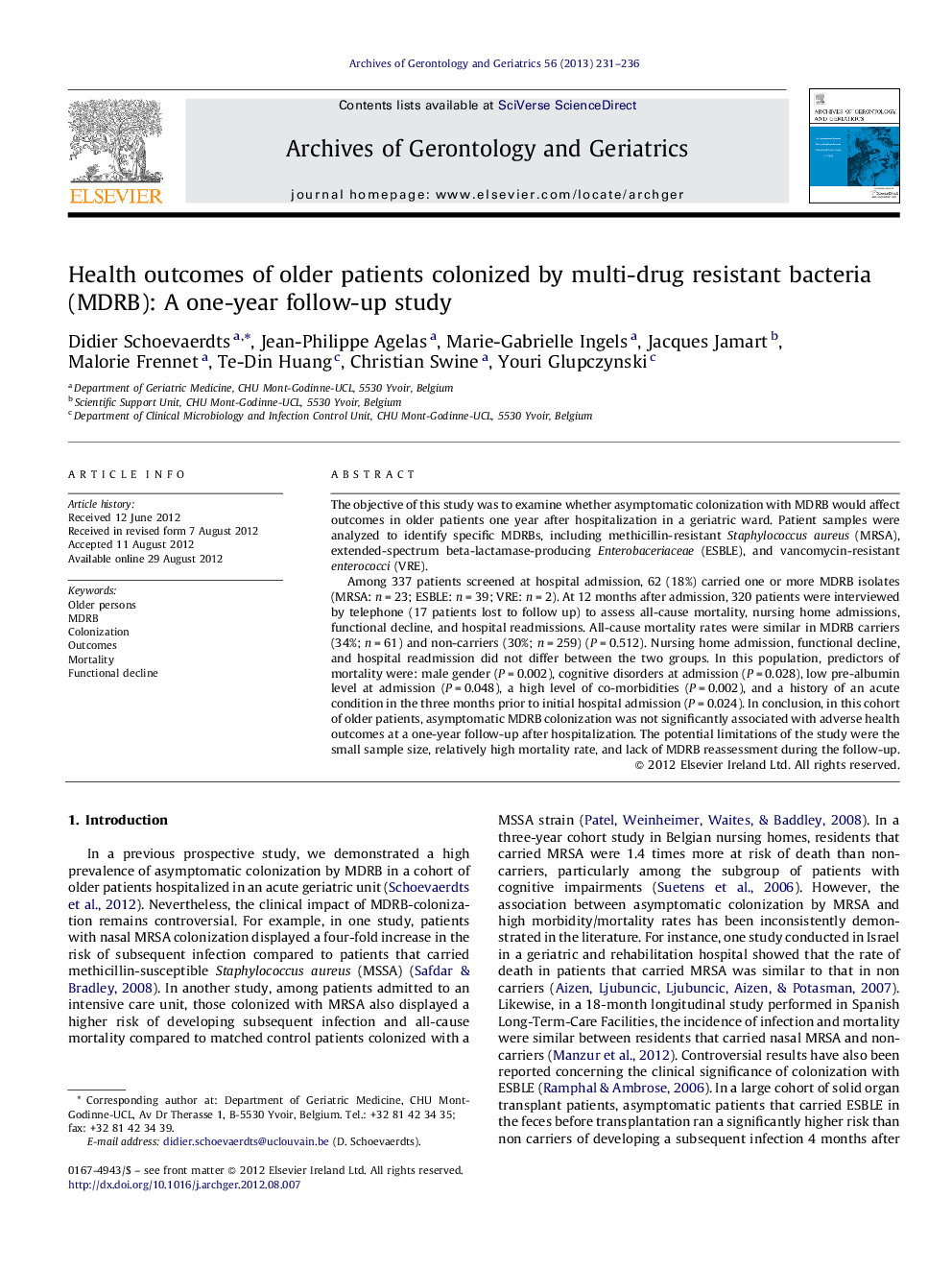| Article ID | Journal | Published Year | Pages | File Type |
|---|---|---|---|---|
| 8258147 | Archives of Gerontology and Geriatrics | 2013 | 6 Pages |
Abstract
Among 337 patients screened at hospital admission, 62 (18%) carried one or more MDRB isolates (MRSA: n = 23; ESBLE: n = 39; VRE: n = 2). At 12 months after admission, 320 patients were interviewed by telephone (17 patients lost to follow up) to assess all-cause mortality, nursing home admissions, functional decline, and hospital readmissions. All-cause mortality rates were similar in MDRB carriers (34%; n = 61) and non-carriers (30%; n = 259) (P = 0.512). Nursing home admission, functional decline, and hospital readmission did not differ between the two groups. In this population, predictors of mortality were: male gender (P = 0.002), cognitive disorders at admission (P = 0.028), low pre-albumin level at admission (P = 0.048), a high level of co-morbidities (P = 0.002), and a history of an acute condition in the three months prior to initial hospital admission (P = 0.024). In conclusion, in this cohort of older patients, asymptomatic MDRB colonization was not significantly associated with adverse health outcomes at a one-year follow-up after hospitalization. The potential limitations of the study were the small sample size, relatively high mortality rate, and lack of MDRB reassessment during the follow-up.
Related Topics
Life Sciences
Biochemistry, Genetics and Molecular Biology
Ageing
Authors
Didier Schoevaerdts, Jean-Philippe Agelas, Marie-Gabrielle Ingels, Jacques Jamart, Malorie Frennet, Te-Din Huang, Christian Swine, Youri Glupczynski,
